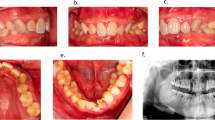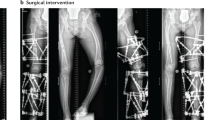Abstract
ALTHOUGH both prophylactic and curative technique against rickets is now highly developed, the pathogenesis of the disease is still far from being adequately understood. Recent experimental findings—some having already been published1, others to be published shortly—are briefly summarised here since they afford, it would seem, strong support for the view that, whilst other factors play a part, and it would be idle to endeavour to dissociate phosphorus from calcium metabolism, yet nevertheless a chronic defect of phosphorus uptake from the diet is the most important single factor in the production of experimental rickets in rats. This is very probably true in a large proportion of cases of human rickets also, vitamin D being of importance in the rat or human dietary only in so far as its presence enables the organism to increase the net intestinal absorption of phosphorus from the food. Our findings also throw a little light, it is believed, on the part played by the bone enzyme in this disease.
This is a preview of subscription content, access via your institution
Access options
Subscribe to this journal
Receive 51 print issues and online access
$199.00 per year
only $3.90 per issue
Buy this article
- Purchase on Springer Link
- Instant access to full article PDF
Prices may be subject to local taxes which are calculated during checkout
Similar content being viewed by others
References
Branion, Guyatt and Kay, J. Biol. Chem., 92, XI; 1931.
Bills, et al., J. Biol. Chem., 90, 619; 1931.
Robison, Biochem, J., 17, 286; 1923.
Brown, Shohl, Chapman, Rose and Saurwein, J. Biol. Chem., 98, 207; 1932: and several communications by Shohl et al., for which references may be found in this paper.
Theiler and Green, Nutrition Abstracts and Reviews, 1, 359; 1932.
Bakwin, Bodansky and Turner, Proc. Soc. Exp. Biol. and Med., 29, 1238; 1932.
Author information
Authors and Affiliations
Rights and permissions
About this article
Cite this article
KAY, H., GUYATT, B. Experimental Rickets as a Phosphorus Deficiency Disease. Nature 131, 468–469 (1933). https://doi.org/10.1038/131468b0
Issue Date:
DOI: https://doi.org/10.1038/131468b0
This article is cited by
-
Phosphorus and Calcium Deficiency Diseases as Two Ætiologically Distinct Entities
Nature (1937)
-
Die Vitamine
Klinische Wochenschrift (1935)
Comments
By submitting a comment you agree to abide by our Terms and Community Guidelines. If you find something abusive or that does not comply with our terms or guidelines please flag it as inappropriate.



